Keeping up with Emerging Assistive Technology
3 August 2017
The World Health Organisation (WHO) defines Assistive Technology (AT) as “an umbrella term for any device or system that allows individuals to perform tasks they would otherwise be unable to do or increases the ease and safety with which tasks can be performed.” This definition recognises that assistive technology is any aid, device, program, or service that has the potential to make a significant impact on the independence and quality of life for users.
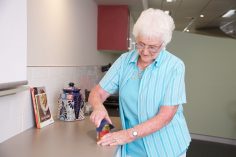
Previously there has been a misconception that assistive technology regarded complex interventions related to computers, however the clarification afforded by the WHO definition recognises that assistive technology can refer to simple aids, such as a jar opener, all the way through to sophisticated control systems that allow the independent operation of sophisticated powered wheelchairs or the ability to operate a system to allow for independent environmental control.
The potential of assistive technology is limitless and outstanding, with profound benefits that include the ability to enable people to live productive, independent and dignified lives and participate in social, economic and personal endeavours that increase connectedness, safety and security, identity and quality of life. The WHO recognises that without assistive technology, “people are often excluded, isolated, and locked into poverty, thereby increasing the impact of disease and disability on a person, their family, and society.”
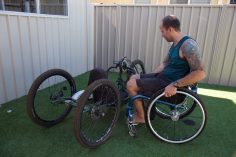
Globally, WHO estimates that currently over one billion people make use of one or more assistive technologies and predicts that this figure will rise to two billion by 2050. This also translates to a growing economic consideration around assistive technology, with the assistive devices market in 2015 being valued at $14 billion dollars and anticipated growth to $26 billion by 2024. This information reflects that the assistive technology market is sizable and caters to incredibly diverse needs.
It is estimated there are 25,000, and growing, assistive technology devices in the global marketplace, and it can be a daunting task trying to keep on top of the latest innovations. The Independent Living Centre WA (ILC) prides itself on taking an active role in keeping up to date with new and emerging assistive technology and, as part of the training and information and advisory services we offer, disseminates this information to the disability and aged care sectors.
The occupational therapists and speech pathologists at the ILC have a passionate interest in assuring that information on the latest innovations is available so the most appropriate and effective interventions are considered, and people are making informed decisions about the AT they choose. We now live in a world where the previously unimaginable is possible and the scope of assistive technology is ever increasing, with the “what if” queries often having tangible innovations and solutions that allow us to do more than imagine the possibilities.
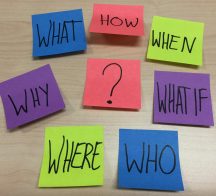
Read our blog post ‘Solutions start with questions’; part written by an elder with a severe arthritic condition about her life before and after finding assistive technology. “With my improved health I can achieve much more. Solving problems, continuing to make decisions, being involved in interaction and communication, as well as having a network of people through my life, makes for a better life than I might have expected. My iPad has become my friend and I can’t live without it.”
Large companies acknowledge the need for accessibility and have adopted policies that foster innovation and result in positive outcomes for consumers. IBM has a focus on design that allows access by all and has published resources and programs that promote inclusivity. Search IBM Accessibility and there is an accessibility handbook to download, amongst other resources. Google is another multinational that rewards innovation and has undertaken the provision of funding to enterprises that make an impact on the lives of people with disabilities through their Google Impact Challenges.
Technologies are available to address function related to a multitude of impairments and some of the more recent additions to NED our National Equipment Database are listed below:
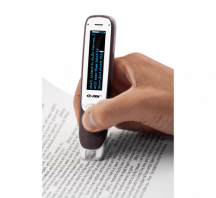
C-Pen Reader Pen: A portable, pocket sized device which scans text on a page and then plays it aloud. It can play back text read immediately or it can be stored for uploading to a PC or Mac at later time as well as record audio for notes. This device may be used in the home or classroom to assist literacy and reading.

GlassOuse: A wireless bluetooth mouse which is embedded into the top of a glasses frame. The glasses have a switch attached to them which enables the person to perform mouse functions by biting on the switch to replicate a click. This device would be used by a person with limited physical mobility.
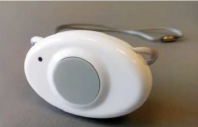
SureSafe Go ActivePERS Pendant with App: The Sure Safe Go pendant activates an app which calls 1 emergency contact and sends 5 sms alert notifications with the individual’s location. The pendant also has fall detection, a non-usage alert if the pendant is not worn and a gait change notification (which can pick up a change in walking patterns which could potentially lead to a fall). The battery lasts approximately 2 years (based on normal use).
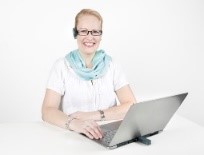
QUHA ZONO Gyroscopic Air Mouse: A wireless air mouse which is worn by a user to control the mouse on a computer screen. The air mouse can clip onto a pair of glasses, hat or headband to be used. The user turns their head to move the mouse on the screen and a click is performed by its accompanying software. This device would be used by a person with limited physical mobility. It could be used in conjunction with voice activation software.
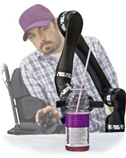
JACO Robotic Arm System: A robotic arm that is attached to a powered wheelchair that can perform a variety of functions. For example, picking up objects, performing tasks and feeding. This device would be used by a person with a physical impairment.
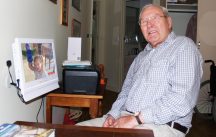
Konnekt Videophone: A tablet-based videophone that can call through to mobiles, tablets, PCs and phones from one push of a button. Can be used to connect via video call or telephone call. Contacts, call buttons and text size can be customised. Can be wall or table mounted. Read our blog post ‘Being there when you can’t be there’; a heart warming story about how Graham, who has a hearing impairment, uses assistive technology to stay connected with his family and friends.
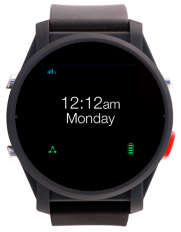
Find-Me Tunstall Carers Watch: A monitored cellular personal emergency response system with panic alert, GPS locator and fall detector. The watch is also a mobile phone and can be programmed to contact a 24 hour response centre when the alert button is pushed, allowing two way voice communication with a trained operator. The operator can then determine the location of the watch and direct responders to the user’s location.
The potential of emerging technology is immense and recently, the My Tech Project, which is run through the ILC, presented an ‘Emerging Technology Open Day’, which was quickly booked out and well attended, and showcased some of the emerging assistive technologies that promote independence, participation and quality of life. Eleven different suppliers and presenters were available on the day and discussed accessibility options from Apple, hands free phones, home automation and driverless vehicles.
The resources from the Emerging Technology Open Day can be found on our website: indigosolutions.org.au
Indigo (formerly Independent Living Centre WA) has a wealth of resources that are available to individuals, carers, service providers and health professionals from NED our National Equipment Database: www.askned.com.au.
Our enquiry line: 1300 885 886 provides the opportunity to discuss AT needs and potential pathways to acquisition of AT with experienced and passionate health professionals who have profound understanding of the impact of assistive technology on function and well-being.

 Translate
Translate